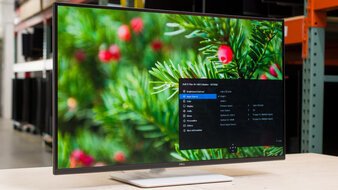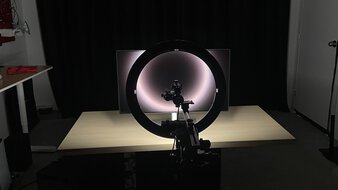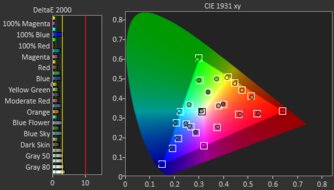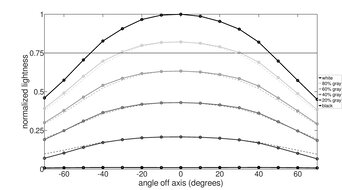Using two monitors in your setup offers several benefits, particularly for multitasking. Some brands and retailers sell two-in-one monitor bundles, but those are usually cheap displays that aren't special, so if your budget allows for it, getting two units of a better model is the best way to go. While you can choose any size you prefer, 24- and 27-inch screens are commonly used in a dual setup, as larger displays can occupy too much space.
Before buying anything, you'll want to think about how to set up dual monitors. Most modern computers don't have issues outputting two signals at once, and it's easiest if the computer has two video outputs or you have a dock with multiple video outputs. Many laptops have two video outputs, so this is rarely an issue with them. That said, if your PC only has one output and you don't have an adapter, then one of the monitors you purchase needs to support daisy chaining, which allows you to connect other monitors directly to it.
There are some other factors to consider when looking for monitors. Those with wide viewing angles keep the image consistent from the sides, which is useful if you aren't viewing the screen from directly in front. Having versatile ergonomics also helps you adjust the two displays to your ideal position. Additionally, if you're using the displays in a bright room, it's helpful if they can get bright and handle reflections well so you can see the screen easily.
We've bought and tested over 370 monitors, and below are our recommendations for the best secondary monitor. See our recommendations for the best USB-C monitors and the best vertical monitors. However, if you think a dual monitor setup isn't right for you, it may be worth looking for the best ultrawide monitors instead.
Quick Look






We buy and test more than 30 monitors each year, with units that we buy completely on our own, without any cherry-picked units or samples. We put a lot into each unbiased, straight-to-the-point review, and there's a whole process from purchasing to publishing, involving multiple teams and people. We do more than just use the monitor for a week; we use specialized and custom tools to measure various aspects with objective data-based results. We also consider multiple factors before making any recommendations, including the monitor's cost, its performance against the competition, and whether or not it's easy to find.
-
Best Monitor For Dual Setup
 Office8.5Ergonomics9.7Daisy ChainingDisplayPort Out & ThunderboltSDR Brightness8.3Editing7.9SDR Picture7.5HDR Picture6.2Color Accuracy8.1Size27"Pixel TypeIPSMax Refresh Rate120 HzSee all our test resultsNative Resolution3840 x 2160
Office8.5Ergonomics9.7Daisy ChainingDisplayPort Out & ThunderboltSDR Brightness8.3Editing7.9SDR Picture7.5HDR Picture6.2Color Accuracy8.1Size27"Pixel TypeIPSMax Refresh Rate120 HzSee all our test resultsNative Resolution3840 x 2160The best monitor for dual setup that we've tested is the Dell U2725QE. It's a high-end 4k monitor with a ton of features, including a large USB hub. If you can't find it through retailers, you can also get it directly from Dell's website. What makes it such a great choice to use in a multi-monitor setup is that it includes a Thunderbolt video output, as well as a DisplayPort output, so you can connect up to two monitors directly to this one. It's something you can use as a central hub in your multi-monitor setup thanks to these video outputs, and you won't need to spend extra on an external video dock.
It has five total USB-C ports and five USB-A ports, so you can connect all kinds of devices to it, and it has a KVM switch that makes it easy to switch between computers and use the same devices on both. Besides its feature-filled hub, it has good picture quality with a high 4k resolution that results in sharp image and text clarity. It also gets bright enough to fight glare in most rooms, and its wide viewing angles keep the image consistent even if you aren't viewing it from directly in front. Plus, it comes with an extremely ergonomic stand, making it very easy to adjust in your setup.
-
Best Mid-Range Monitor For Dual Setup
 Office8.5Ergonomics9.5Daisy ChainingDisplayPort OutSDR Brightness8.1Editing7.7SDR Picture6.9HDR Picture5.5Color Accuracy8.9Size27"Pixel TypeIPSMax Refresh Rate60 HzSee all our test resultsNative Resolution3840 x 2160
Office8.5Ergonomics9.5Daisy ChainingDisplayPort OutSDR Brightness8.1Editing7.7SDR Picture6.9HDR Picture5.5Color Accuracy8.9Size27"Pixel TypeIPSMax Refresh Rate60 HzSee all our test resultsNative Resolution3840 x 2160If you don't have the budget for the Dell U2725QE, or simply don't need all its premium features, then consider a lower-end option, like the ASUS ProArt Display PA279CRV. The main trade-off for getting this model at a lower cost is that it has fewer features than the Dell. It has fewer USB ports and doesn't have a KVM switch, so it's not as convenient to use if you want to connect two computers to it and constantly switch between them. However, it has useful perks, like a DisplayPort output, so even though it doesn't have two video outputs like the Dell, you can still use it for daisy chaining. Plus, one of its USB-C ports supports DisplayPort Alt Mode with 90W of power delivery, so it can charge your laptop and display an image from it with one cable.
Despite the differences in features, it has a similar picture quality to the Dell, as it's another 4k, 27-inch display. Text looks sharp, visibility isn't an issue in most well-lit rooms, and it has wide viewing angles that are useful if you're viewing the display from the sides. Plus, it has picture modes for content creators using different color spaces, including up to Rec. 2020, and it's very accurate in its sRGB mode.
-
Best Lower Mid-Range Monitor For Dual Setup
 Office8.4Ergonomics9.2Daisy ChainingNoSDR Brightness7.8Editing7.8SDR Picture7.5HDR Picture4.8Color Accuracy8.8Size27"Pixel TypeIPSMax Refresh Rate120 HzSee all our test resultsNative Resolution3840 x 2160
Office8.4Ergonomics9.2Daisy ChainingNoSDR Brightness7.8Editing7.8SDR Picture7.5HDR Picture4.8Color Accuracy8.8Size27"Pixel TypeIPSMax Refresh Rate120 HzSee all our test resultsNative Resolution3840 x 2160If you want a more cost-friendly alternative without giving up much in picture quality, then check out the Dell S2725QC. It's similar enough to the ASUS ProArt Display PA279CRV as it's another 4k, 27-inch option with similar picture quality. If you can't find this through retailers, it's also available on Dell's website. It has good brightness, wide viewing angles, and colors are accurate before calibration, but it doesn't have as many picture modes for various color spaces as the ASUS. That said, the biggest difference between this monitor and the ASUS is that it doesn't have any video outputs, so you can't daisy-chain a second monitor to this one. Due to this, you have to make sure your computer has enough video ports to connect two monitors.
Despite not having video outputs, this monitor also has a small USB hub. It includes two USB-A and two USB-C ports, one of which supports DisplayPort Alt Mode and 65W of power delivery to charge a laptop. However, unlike higher-end monitors, it doesn't have a KVM switch. If you don't need this USB hub, you can also check out the cheaper Dell S2725QS, which performs similarly but has fewer features.
-
Best Budget Monitor For Dual Setup
 Office7.7Ergonomics9.0Daisy ChainingNoSDR Brightness8.2Editing7.6SDR Picture7.1HDR Picture5.1Color Accuracy9.1Size27"Pixel TypeIPSMax Refresh Rate180 HzSee all our test resultsNative Resolution2560 x 1440
Office7.7Ergonomics9.0Daisy ChainingNoSDR Brightness8.2Editing7.6SDR Picture7.1HDR Picture5.1Color Accuracy9.1Size27"Pixel TypeIPSMax Refresh Rate180 HzSee all our test resultsNative Resolution2560 x 1440If you're on a budget and find that the Dell S2725QC is still too expensive or you can't find it on sale, then the ASUS ROG Strix XG27ACS is a great choice as a budget monitor. It's different from the Dell because it has a lower 1440p resolution. While this means that text doesn't look as sharp, there are a few advantages to using a lower-resolution display, as it's less demanding on your computer.
Like the Dell, it doesn't have a video output for daisy chaining, so your computer needs to have two video outputs, or you have to have an external dock. Besides that, it comes with a very ergonomic stand, has wide viewing angles, and gets fairly bright, and the screen coating reduces glare well. It also has a USB-C port to connect a laptop, but it's limited to 5W of power and doesn't have any other USB-A ports. On the plus side, it comes with a very accurate sRGB mode that many budget-friendly monitors don't have, which is a nice touch for this model.
-
Best Cheap Monitor For Dual Setup
 Office7.1Ergonomics9.4Daisy ChainingNoSDR Brightness6.6Editing6.3SDR Picture6.7HDR Picture2.5Color Accuracy7.8Size24"Pixel TypeIPSMax Refresh Rate100 HzSee all our test resultsNative Resolution1920 x 1080
Office7.1Ergonomics9.4Daisy ChainingNoSDR Brightness6.6Editing6.3SDR Picture6.7HDR Picture2.5Color Accuracy7.8Size24"Pixel TypeIPSMax Refresh Rate100 HzSee all our test resultsNative Resolution1920 x 1080Should you be looking for the best secondary monitor at a cheap price, or even if you need to buy a bunch for your office space, then check out the Dell P2425H. You can find it for a low cost directly from Dell's website if you can't find it from retailers. It's a step down in performance from the ASUS ROG Strix XG27ACS because it has a lower 1080p resolution, so it has worse text clarity, and it doesn't get as bright either. It also has a smaller screen, which you may prefer for a multi-monitor setup because having two of them side by side takes up less screen space than larger monitors.
It actually has a few more features than you'd normally find on an entry-level work monitor. Besides its ergonomic stand, it also comes with a USB hub that includes three USB-A ports and a USB-C port. However, unlike higher-end monitors, the USB-C port doesn't support DisplayPort Alt Mode, so you can't use it to display a video signal from your laptop, as it's meant for data transfer or charging small devices with 15W of power delivery.
Notable Mentions
-
MSI G274QPF-QD:
The MSI G274QPF-QD is a cheap monitor with a higher 1440p resolution than the Dell P2524H. This results in sharper text, but it can be harder to find at times than the Dell.
See our review -
ASUS ProArt Display PA27JCV:
The ASUS ProArt Display PA27JCV is a premium work monitor with a higher 5k resolution than the Dell U2725QE. This is something to consider if you want the higher pixel density, but two 5k monitors may be too demanding on your computer.
See our review -
AOC Q27G3XMN:
The AOC Q27G3XMN is a budget-friendly 1440p monitor with better picture quality than the ASUS ROG Strix XG27ACS. It's a good monitor if you care about having better picture quality, but it's not as good for productivity because it has narrow viewing angles.
See our review
Recent Updates
Oct 09, 2025:
We added the Dell S2725QC as the 'Best Lower Mid-Range Dual Monitor' to give another option, and we replaced the Dell P2423D with the ASUS ROG Strix XG27ACS, which is easier to find. In the Notable Mentions, we removed the Dell S2722QC and the Dell U2723QE and added the MSI G274QPF-QD, the ASUS ProArt Display PA27JCV, and the AOC Q27G3XMN.
May 30, 2025:
We added the Dell U2725QE as the 'Best Monitor' because it has a ton of features, and renamed the ASUS ProArt Display PA279CRV as the 'Best Mid-Range Monitor.' We also moved the Dell S2722QC to the Notable Mentions and replaced the Dell S2721QS with the Dell U2723QE in the Notable Mentions.
Feb 19, 2025:
We introduced a new format to the article and overhauled the recommended monitors to reflect this. We replaced the Dell S2721QS with the ASUS ProArt Display PA279CRV as it has extra features. We removed the Dell G2724D because it's hard to find and renamed the Dell P2423D as 'Best Budget Monitor.' We also added the Dell S2722QC as the 'Best Mid-Range Monitor.' We added the Dell S2721QS and the ASUS ROG Strix XG27ACS to the Notable Mentions.
Dec 10, 2024:
Replaced the Dell U2723QE with the Dell S2721QS as the 'Best Monitor for Dual Setup,' as it costs much less. Replaced the ASUS ProArt Display PA278CV with the Dell G2724D, as it has a lower cost. Removed the ASUS VG246H as a Notable Mention.
Sep 20, 2024: We replaced the Dell G2724D with the Dell P2425H, which has more office-oriented features. We also replaced the Dell U3223QE and the Dell S2721QS with the ASUS VG246H and the Dell S2722QC in the Notable Mentions to better match the scope of the recommendation.
All Reviews
Our recommendations are based on what we think are the best monitors for dual configuration. They are adapted to be valid for most people, in each price range. The rating is based on our review, factoring in price and feedback from our visitors.
If you would prefer to make your own decision, here is the list of all of our monitor reviews. Be careful not to get too caught up in the details. Most monitors are good enough to please most people, and the things we fault monitors on are often not noticeable unless you really look for them.















